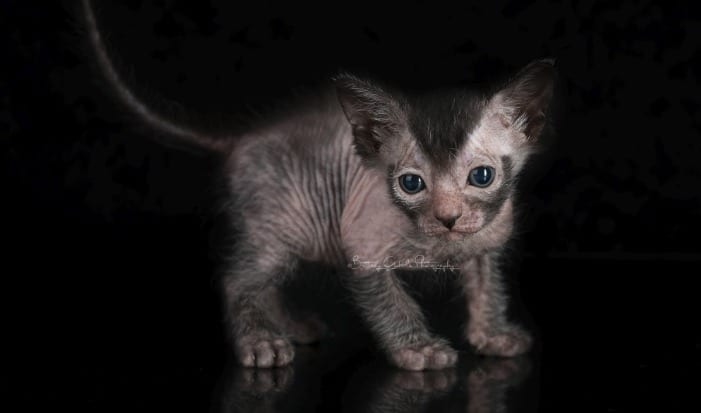Are you considering adopting a beautiful calico cat? Or are you the new proud pet parent of a calico kitty? If you’ve answered yes to those questions, or if you’re just curious about all things about calico cats, then you’ve come to the right place!
Connect with a verified veterinarian in minutes. Licensed vets are available 24/7 to answer your questions. No need to worry about your furry family member.
In this article, we’ll take a look at what is a calico cat, myths and facts about calico kitties and much more! Let’s get started!
What is a Calico Cat?
Calico cats are a type of domestic cat that comes in three colors: orange (red), black (sometimes a smokey gray) and white (or cream). You may have also noticed calicos that have a bluish color rather than black, and so on. These cats are highly unique; you’ll notice that the markings of a calico cat vary from individual to individual. You’ll hardly ever see a calico kitty that looks exactly like another calico.
Did you know that calico is not a breed by itself? The word “calico” only determines the type of patterns and colors in the cat’s coat. Many breeds of cats can produce a calico cat. These include the Manx, American Shorthair, Persian, Japanese Bobtail, British Shorthair, Turkish Angora, Norwegian Forest cats, Turkish Van and other breeds.
Calico cats are thought to have been around a very long time, with them even dating back to the time of the ancient Egyptians. Research hasn’t proven this fact, but calico kitties have been around a long time. You can even find them in Japanese paintings, which date back to the 1800s.
Why are They Called Calico Cats?
That’s a good question! In the U.S., “calico” is used to describe a printed design on fabric. The design is usually the same all over. Calico cats may have derived their name from this type of fabric design.

Review symptoms, medications & behavior to keep your pets healthy with a Vet Online in just minutes.
Ask a Vet Live NowWhat’s a Calibby?
There are three types of calico cats:
- Dilute calico: this type of calico kitty has lighter colors—they generally have white coats with large spots of strawberry-blonde and smoky gray.
- Normal calico: typically has a white coat and large areas of black and orange.
- Calibby: is a mix of the tabby and calico cats. On these cats, the calico patches are orange and black, and they have stripes or spotted markings.
Calico cats are truly unique, amazing fur babies!
Calico Cat Genetics
Calico cats’ coat color is derived from their genetics. In fact, coat color is related to a cat’s gender. Male cats have one X and one Y chromosome, while females have two X chromosomes. A cat’s color is determined by the X chromosome, which is tied to the black and orange colors. The white color is determined by a completely different gene.
For instance, say an X chromosome has the gene for black fur. If that gene is “turned off,” the fur in that part of the cat’s body will be orange. The same is true for white fur—if that gene is turned off, the fur will turn orange. If the gene for orange fur is turned off, this will create black fur.
Calico cats are female because of their unique genetics; males are quite rare. A male calico cat is always sterile because they have two X’s and one Y. In fact, only about 1 in 3,000 calico cats are male. Since males have the combination of XXY genes, they are called Klinefelter males, which is what causes sterility in male calicos. Male calico cat health problems are caused by the extra X chromosome, which can cause additional problems for male cats.
Due to the extra X chromosome, male calicos can suffer additional health issues including:
- Cognitive impairments
- Behavior problems
- Insulin resistance
- Dyslipidemia
- Increased body fat
- Heart disease
- Diabetes
- Reduced bone mineral count (puts a cat at greater risk of bone fractures)
If you haven’t noticed, calico cats are a great way to study genetics!
Is It Possible to Breed Calico Cats?
That’s a great question! However, the answer may surprise you! The answer is no—it’s not possible to breed calico cats due to their unique genetics. All calico cats are a happy, random happening brought about by Nature and the cat parents’ genetics!
Calico Cats Personality
When it comes to personalities, pet parents and breeders tend to agree that calicos have distinct personalities. Here again, research has not shown that calico cats are any different from other types of cats. A cat’s unique personality is more often determined by her genetics and if she’s been socialized or not. You’ll find that calico’s each have their own personality and quirks.
However, calico cats are said to be highly independent individuals. In fact, the term “cattitude” if often attributed to calico fur babies! They’re also said to not like other cat types of cats, though there’s no scientific evidence to prove this.
What you’ll find is that some calico cats are laid back, easy going and happy most of the time. Some are smarter than others, and some calicos are more adventurous, independent, etc. Each kitty is unique and special in her own way!
How Long Do Calico Cats Live on Average?
Female calico cats can live anywhere from between 15-20 years, which is the average life span of cats in general. However, when it comes to males, these kitties don’t always live as long as a typical cat.
Generally, a cat’s lifespan depends on the breed, the type of diet she eats, if she’s an indoor or outdoor kitty, if she receives regular medical care, etc. And don’t forget all cats needs a generous helping of love and attention from the pet parents!
With good medical care, lots of love and attention, it is possible to keep calico cats healthy and help them live longer lives.
Fun Facts About Calico Cats
During our research, we came across facts about calico cats!
1). Beautiful eyes: calico fur babies come from a variety of breeds, which means they can have some very pretty eyes. Colors can range from blue, green, black, hazel and almond, amongst other colors. And calico eyes vary by shape, depending on their breed.
2). State cat: Maryland, in the U.S. has calico cats at their Official State Cat of Maryland!
3). Various names: calico cats are also called by other names including:
- Patched cat
- Triple fur (Mi-ke in Japanese)
- Lapjeskat (in the Netherlands—means “patched cat”)
4). Japanese “waving” cats are based on calico cats: have you ever seen those waving cats that are famous in Japan? Known as Maneki-Neko cats, are seen everywhere in Japan. You’ll find these cats waving in restaurants, shops, and other places. While it looks as if the cats are waving, they’re actually beckoning good fortune to them. The Japanese see calico cats as bringing good fortune. Over the years, Maneki-Neko cats have become famous the world over!
5). Calico cats in folklore: there are many legends about calico cats in folklore from around the globe. These include:
- Irish wives’ tale say that warts can be cured by being rubbed with a calico cat’s tail.
- In Celtic folklore, calico cats were thought to bring good luck and money—the cats were known as “money cats.”
- In Japan, fisherman took calico kitties with them on board their boats. The cats were thought to protect everyone from ghosts and other problems while at sea.
6). Famous calico cats: have been famous through the centuries, too!
A calico cat saved a metro station in Kinokawa, Japan, when the station was going to be closed to due to budget issues. However, the town decided to make the Station Master a calico cat. The cat was a stray named Tama. Her job was to great passengers and she soon became a celebrity. Everyone wanted to see this famous cat, and as a result, the number of passengers to the station increased by about 17%! This increase kept the station open, so Tama the calico cat brought good fortune to this train station.
In Australia, there was another famous calico cat named Marzipan. She lived at the Astor Theatre in Melbourne, where the greeted moviegoers in the lobby. She was even known to jump into people’s laps during a movie. She was on the job for 21 years.
Calico cats are found in some paintings by famous European painters. Jean-Baptiste-Simeon Chardin, a French painter, featured calicos in several of his paintings.
Another celebrity calico cat is Pudge. She’s on Instagram (@Pudgethecat) and has about 670.8k followers!
7). Calico cats are the most colorful: these are some of the most colorful cats, next to tortoise shell cats. While these cats are genetically similar, they are distinct types of cats. Tortoise shell cats usually have only two colors—red and black—with no white. Calico cats, on the other hand, have three colors that form their distinctive “patches.”
Keep Your Calico Cat Healthy
As with other types of cats, your calico cat needs care every day, which includes:
Grooming: especially if she has long, thick fur you fur baby may need to be brushed every day to avoid mat and snarls. In addition, daily grooming helps remove any shedding fur, which could end up in your kitty’s tummy.
Fresh water: your calico kitty needs clean, fresh water every single day. Old water can harbor bacteria and other organisms that could make her sick.
Litter box: if your home has more than one feline fur baby, you’ll need to have at least one litter box per cat. The litter box should be kept clean by scooping it out once day. It should be completely emptied of old litter, washed and refilled with new litter.
Regular vet visits: yearly visits (or more often if recommended by your vet) to the vet are necessary. Frequent checkups will help the vet to spot any changes or diseases early. Early diagnosis and treatment can make all the difference to your kitty’s life. Plus, your fur baby will also receive needed vaccinations, dental treatment, etc.
Spend time with your kitty: your little calico fur ball also needs daily attention and love. So, be sure to spend time with her every day by playing, rubbing her, letting lay in your lap, etc. You’ll both benefit from this time together each day!
Calico cats are special, just like other cats. They have beautiful coats, unique & individual personalities and they may just bring some good fortune to your home! We’d like to with you and your calico cat all the best and much fun!
Connect with a verified veterinarian in minutes. Licensed vets are available 24/7 to answer your questions. No need to worry about your furry family member.

Tom
Tom has always loved to write since he was little - he wanted to be either a writer or a veterinary doctor, but he ended up being a professional writer while most of his works are based on animals. He was born in San Francisco but later moved to Texas to continue his job as a writer. He graduated from the University of San Francisco where he studied biotechnology. He is happily married and a soon to be father!
Review symptoms, medications & behavior to keep your pets healthy with a Vet Online in just minutes.
Ask a Vet Live Now



